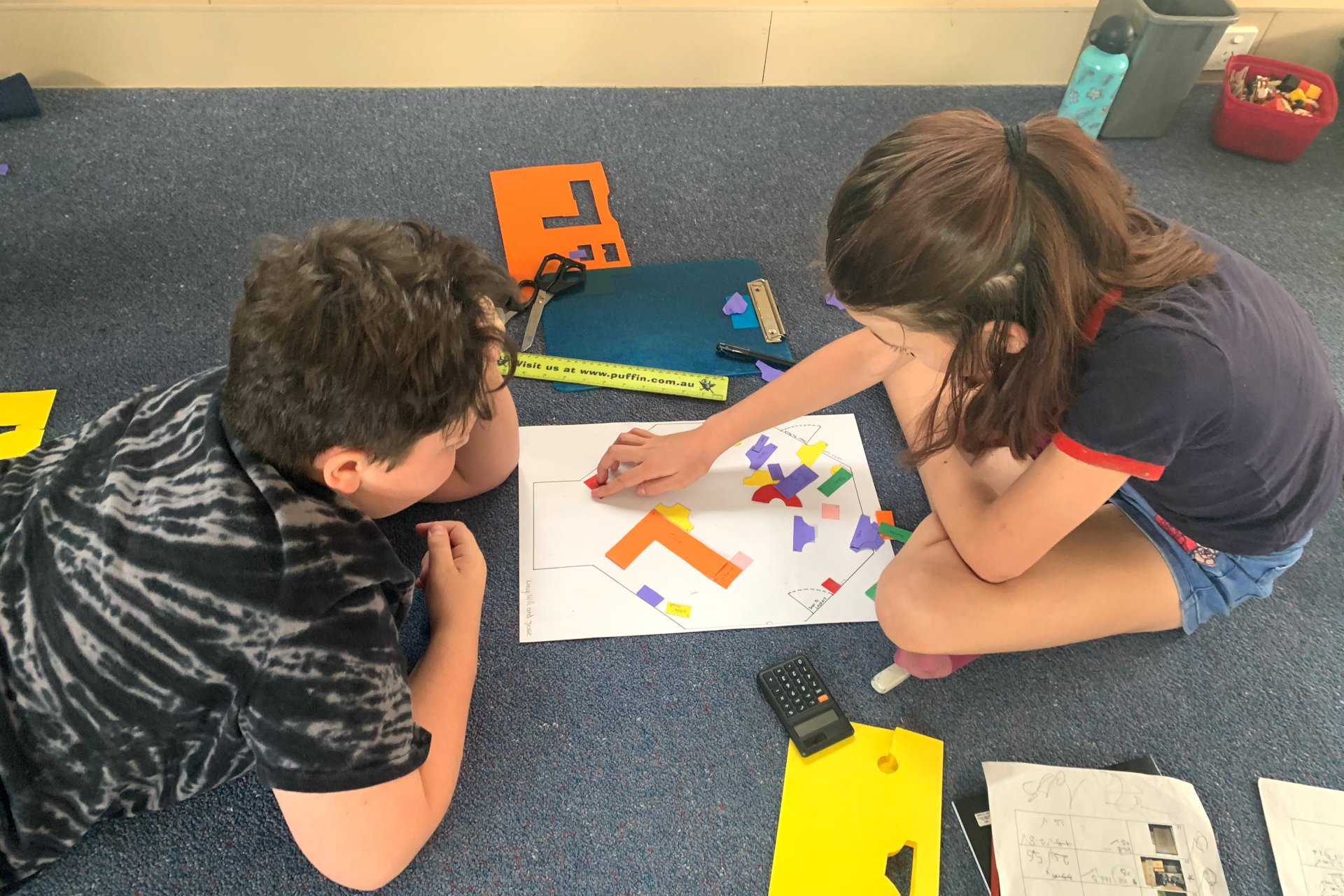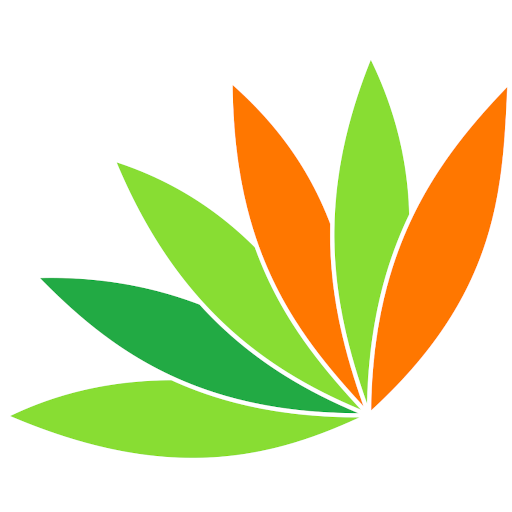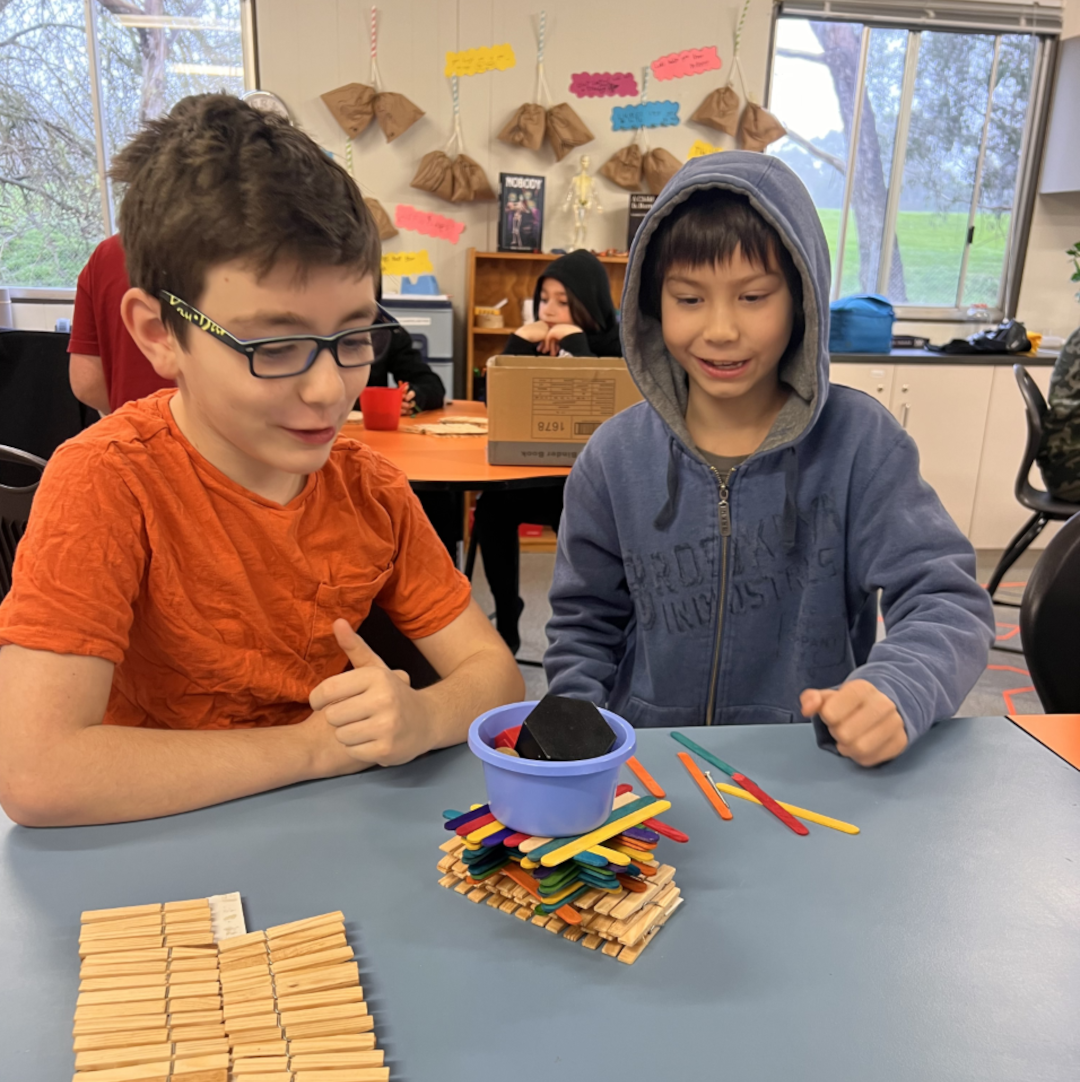
Maths
We cover the essential numeracy skills while allowing for individual abilities and interests.
Maths is incorporated into many aspects of daily learning at Village School, and we use practical hands-on activities to help our students develop a solid understanding of the principles and applications of maths in their everyday lives.
We carefully map our classroom learning to the Victorian curriculum to ensure that all students develop the numeracy skills required.
Mathematics curriculum
The maths curriculum is designed to ensure that students understand important maths concepts and that they develop the capabilities to apply this information in their daily lives, both now and in the future. All topics begin with foundational skills and concepts that are built upon as the student’s ability and understanding progress over each year.
-
In this topic, students learn to count in sequence and use number lines, perform arithmetic operations including addition, subtraction, multiplication and division, learn about fractions and decimals, and explore money.
-
Students explore units of measurement, including length, mass, area and capacity, identify and work with two-dimensional and three-dimensional shapes, understand angles, learn to read and interpret maps and tell and convert time.
-
In this area, children collect and sort data and carry out investigations, conduct experiments, and predict and describe outcomes. They learn to compare, interpret and make statements about data, and describe and draw data displays, including tables and graphs. Students assess frequency and probabilities, using ratios, fractions, decimals and percentages and learn about dependence.
General capabilities
In the process of exploring the above maths topic areas, students also develop these general skills:
An understanding of maths, connecting and identifying numbers and patterns
Fluency in reading, recalling and using maths facts and processes
Problem-solving skills for modelling and solving problems
Reasoning abilities involving explaining, investigating and generalising
Maths at Village School
Our teachers work hard to ensure that our classroom activities cover the essential numeracy skills across all ages while allowing for individual learning styles and interests. Our integrated curriculum means that we incorporate maths concepts into projects and activities that may span multiple curriculum areas and skills. Our focus is on the process of learning and on keeping topics meaningful and relevant. We also monitor student’s individual progress closely and modify the activities and difficulty based on their progress and areas of strength. Students may also suggest topics or activities that they are most interested in, to support their love of learning.
We use a variety of resources to support maths learning, including worksheets, online programs and the RIC Maths Boxes developed to cover the Australian Curriculum, as well as many real-life activities such as running a stall, counting the money from special lunches and plenty of maths related games and puzzles.
Examples of maths activities
Here are some examples of activities that our students have undertaken to strengthen their grasp of important maths concepts.
-
The children were presented with information about how much a family of four needed to spend on food for a week, using examples from around the week. They then accepted the challenge to work with their parents at home to see if they could feed their family of four for a week on just $10.
-
The children developed an imaginary world trip, travelling by plane to different countries. They needed to work out their itinerary and then cost it, working out costs for flights, and places to stay and allow for spending as well.
-
After learning about the concept of scale, the task was to build a house, shop or other building to fit into a model on the floor of the stage. The children needed to stick to the scale prescribed. They then designed a park, a railway station and parking lots as well as cars. The final electric lighting of the town integrated with their science lessons on circuits.




